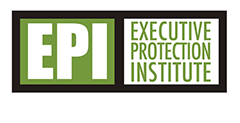As a former Emergency Medical Technician and Rescue Diver, I have seen first aid and trauma kits of varying sizes, shapes and colors that included enough equipment to operate a MASH unit at the site of a catastrophe for a month. On the other hand, the most experienced flight nurse/combat medic I’ve ever known once said that if he had a 2X2 bandage and a pair of rubber gloves, he was “good to go” for almost any occasion. This illustrates that it is the carpenter and not the tools that usually gets the job done, and thus it is clear that competent, recurrent training becomes an essential component in the protection specialist’s toolbox.
Continue reading “Second Aid; Preparing for Medical Emergencies”Tag: providing executive protection
Medical Training Essentials for the Protector
Are you doing what is needed to have the proper medical training for situations that you may encounter as a protector?
All of us in this field, as a “Protector”, understand the need for training. Most of us have attended one or the other of the basic Executive Protection courses. We take classes in Driving, Surveillance Detection, as well as Firearms training. All these courses or programs require some type of follow-on training to maintain skills or to remain proficient. But what types of training you are taking is dictated by what environment you would be working in. You really don’t need to take a course about the M240 machine gun if you are working Residential Security in the United States. That may change if you are securing a compound in a more non-permissive environment. The same goes for what types of medical training you are taking and what certifications you obtain. I hope to address some of those questions here. I will focus on training that should be considered for what we will call the domestic, which would also work for overseas travel depending on where you are going, and the hostile or non-permissive environments.
Continue reading “Medical Training Essentials for the Protector”“Adaptability” my new normal in executive protection
Let me start by giving you a bit of insight into my long journey to where I am now. I started my security career in 1996 bouncing in the nightclubs of NYC & Northern NJ, during those times it was a normal thing for the club security to be tasked with taking care of the security need for the performers who came into their venues. Most “Freestyle” artists did not have a close protection team or any artist for that matter at the time. Once I got the taste for it, there was nothing going to stop me from pursuing it as a career. My path into “EP” was a convoluted one with stops in the Bail Enforcement, PI, skip tracing, etc. along the way, but that all changed when I had an amazing conversation with a now friend and amazing mentor Thomas LeBrun at a conference for a career endeavor and he set me on the path I find myself in 25 yrs. later.
Continue reading ““Adaptability” my new normal in executive protection”Change: How to manage it and reduce its stressful impact
It is often said that people resist change. But is that true? How about a promotion, a salary increase, or a transfer into a preferred assignment? Those are changes, aren’t they? I don’t think many people would resist any of those, do you?
It might be more accurate to say that people resist some change. Specifically, people resist change that is forced upon them; change they did not want and/or can’t control. So, the real issue is how can we manage the change in our lives? Either by taking action to affect the change or by doing something to minimize the negative impact of the change. The issue then is not so much the change, but our ability to manage the change.
Continue reading “Change: How to manage it and reduce its stressful impact”
